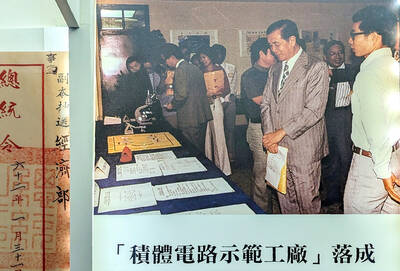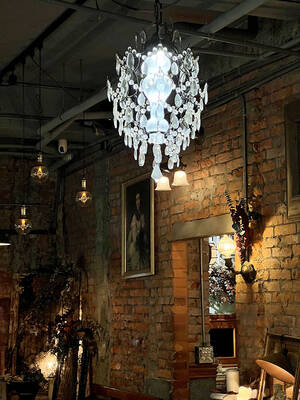Pho is a French word? Who knew?
One of the most popular dishes from Vietnam to make it to restaurant tables around the world, from New York to London, is pho. There’s pho bo and pho ga and pho tai and more.
And while the jury’s still out, it is widely believed by linguists and word sleuths that the word pho is not a Vietnamese word, but in fact comes from the French term pot au feu (pronounced ‘‘poh oh fuh’’). The word was likely introduced to Vietnam by French colonialists more than 100 years ago, according to longtime Vietnam resident Didier Corlou, a top French chef in Hanoi. Corlou told a food seminar in Hanoi in 2003 that pho most likely was a transliteration of the French term for hot pot.
The list of French “loans words” still used in Vietnam today is gaining recognition as young Vietnamese become more curious about their nation’s past, 23-year-old Abby Nguyen of Ho Chi Minh City told the Taipei Times in a recent e-mail exchange.
Before the Americans got involved in a long and protracted war in Vietnam in the 1960s and 1970s, the French had been heavily involved in the country for more than 300 years, she said. From 1853 to 1954, Vietnam was a French colony. As a result, Vietnam’s colonial past has left an indelible mark on the country’s language.
The Vietnamese word for cheese, for example, pho mat, comes from the French word fromage — say it out loud slowly — and cake is called ga to, from the French word gateau.
The word for butter — bo — comes from the French word buerre.
During a recent research expedition via keyboard and the Internet, this reporter came across more than two-dozen “loan words” from French still used in Vietnam today, in addition to pho mat and ga to and bo.
To understand all this, it helps to know a little French, but even if you never studied French in high school or college and you don’t know bonjour from bonsoir, “amusez-vous bien.” That means: “Enjoy!”
Liver pate is called pa in Vietnam today. Pate chaud, according to Californian foodie Andrea Nguyen of the Viet World Kitchen blog, is called pa so.
There’s more, according to sources in Vietnam and overseas. Ba — father in Vietnamese — comes from the French word papa, many linguists believe.
Va li comes from the French word for suitcase — valise.
Bia comes from the French word for beer, biere.
A doll is called a bup-be in Vietnam, from the French word poupee.
What to call the necktie on that senior civil servant giving a press conference on Hanoi television? It’s a ca vat — from the French word cravate.
Doc to comes from the French word docteur, which is not far from the English word doctor.
Phac to comes from facteur, the French word for mailman.
Phim means “movie” and comes from the French word film.
A pha is a headlight on a car or motorscooter, from the French word phare.
Motorscooters and motorcycles are themselves are called moto — from the French term motocyclette.
If you make a mistake in France, it is called a faute. In Vietnam today, people often say phot for mistake.
Bit-tet is from the French term biftek — beefsteak, or just plain steak.
Coffee is called ca phe, from the French word cafe.
Wine is called vang (vin).
Soap is called xa bong (savon).
A circus is called xiec (from the French word cirque).
Ben Zimmer, a noted US-based word maven who writes the weekly “On Language” column for the New York Times, pointed this reporter to the work of Milton Barber, whose 1963 paper, The Phonological Adaptation of French Loan Words in Vietnamese, was eye-opening, to say the least.
MaryJo Pham, a senior at Tufts University in Boston who was born in Vietnam and came to the US as a young girl, said she has been informally collecting French loan words used in Vietnam over the years.
“Piscine is still in use for ‘swimming pool,’” she said in an e-mail.
“And cyclo, or ‘xich lo’ in Vietnamese, is what we call a bicycle-drawn rickshaw.”
“Yogurt — yaourt in French — is called da ua in Vietnamese. Ice cream is called ca rem from the French word creme.”
A clothes zipper is called a phec mo tua in Vietnamese, from the French word fermeture, Pham said. A woman’s bra is called su chien from the French word soutien, she added.
“You can see how some French loan words influenced the actual transliteration of words — for motorscooters, women’s bras, coffee, frozen yogurt, baguette sandwiches — things that were and are indispensable to daily life in Vietnam,” Pham said. “‘Bo for butter, from the French buerre, is still definitely in use in Vietnam. And phim for movies, film, cinema, yes.”

Oct. 27 to Nov. 2 Over a breakfast of soymilk and fried dough costing less than NT$400, seven officials and engineers agreed on a NT$400 million plan — unaware that it would mark the beginning of Taiwan’s semiconductor empire. It was a cold February morning in 1974. Gathered at the unassuming shop were Economics minister Sun Yun-hsuan (孫運璿), director-general of Transportation and Communications Kao Yu-shu (高玉樹), Industrial Technology Research Institute (ITRI) president Wang Chao-chen (王兆振), Telecommunications Laboratories director Kang Pao-huang (康寶煌), Executive Yuan secretary-general Fei Hua (費驊), director-general of Telecommunications Fang Hsien-chi (方賢齊) and Radio Corporation of America (RCA) Laboratories director Pan
The consensus on the Chinese Nationalist Party (KMT) chair race is that Cheng Li-wun (鄭麗文) ran a populist, ideological back-to-basics campaign and soundly defeated former Taipei mayor Hau Lung-bin (郝龍斌), the candidate backed by the big institutional players. Cheng tapped into a wave of popular enthusiasm within the KMT, while the institutional players’ get-out-the-vote abilities fell flat, suggesting their power has weakened significantly. Yet, a closer look at the race paints a more complicated picture, raising questions about some analysts’ conclusions, including my own. TURNOUT Here is a surprising statistic: Turnout was 130,678, or 39.46 percent of the 331,145 eligible party

The classic warmth of a good old-fashioned izakaya beckons you in, all cozy nooks and dark wood finishes, as tables order a third round and waiters sling tapas-sized bites and assorted — sometimes unidentifiable — skewered meats. But there’s a romantic hush about this Ximending (西門町) hotspot, with cocktails savored, plating elegant and never rushed and daters and diners lit by candlelight and chandelier. Each chair is mismatched and the assorted tables appear to be the fanciest picks from a nearby flea market. A naked sewing mannequin stands in a dimly lit corner, adorned with antique mirrors and draped foliage

The election of Cheng Li-wun (鄭麗文) as chair of the Chinese Nationalist Party (KMT) marked a triumphant return of pride in the “Chinese” in the party name. Cheng wants Taiwanese to be proud to call themselves Chinese again. The unambiguous winner was a return to the KMT ideology that formed in the early 2000s under then chairman Lien Chan (連戰) and president Ma Ying-jeou (馬英九) put into practice as far as he could, until ultimately thwarted by hundreds of thousands of protestors thronging the streets in what became known as the Sunflower movement in 2014. Cheng is an unambiguous Chinese ethnonationalist,